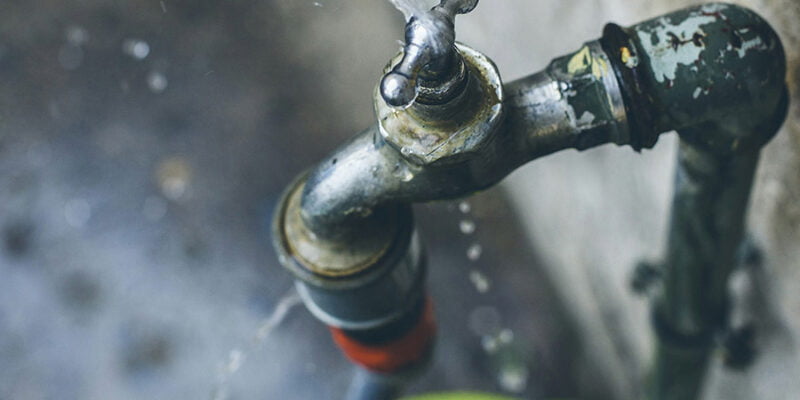The sound of a dripping tap can be incredibly annoying and oftentimes difficult to ignore. Beyond just the disruption of peace, it can also lead to wasted water and a hefty utility bill if not dealt with in time. So, it is better to seek professional help like this London plumber sooner rather than later
In this guide, we will explain the possible causes of a dripping tap, as well as steps on how to handle it and turn your annoyance into joy once more!
Reasons Behind A Dripping Tap
Do you find yourself constantly annoyed by the sound of a dripping tap? Well, you’re not alone. This is one of the most common plumbing problems and one that can be quite frustrating if left unresolved for too long. But why is it happening in the first place?
Worn-out Washers
One of the most common causes of this issue is worn-out washers or seals inside your taps which are no longer providing a watertight seal due to age and wear-and-tear. If this is indeed the case then you should consider replacing these parts as soon as possible.
This is so you avoid wasting precious water or experiencing any further damage down line. Don’t attempt DIY repairs without experience however since incorrect fitting could lead to even more serious issues!
Corrosion
Sometimes, corrosion may also be at fault here; namely rust which can occur over time if not properly dealt with. In this case however, it’s best to opt for professional assistance. Attempting DIY repairs might just worsen the situation further – something that’ll require appliance removal etc.. so better safe than sorry here!
Low Pressure Water
Another potential culprit could be low pressure water. This usually affects multiple fixtures such as showers, bathtubs etc.. Therefore, it might also be worth checking other connections around home too in order to avoid having to tackle the same problem again in near future!
In any case though, make sure there are regular inspections either by yourself or an expert.
Blockages & Debris
Finally, blockages or debris buildup within the tap itself might also cause small drips. Over time, they add up leading to annoying noises and increased water bills if left unchecked for too long!
As such, make sure to clean out your taps regularly using appropriate brushes (a used toothbrush works well here) before reassembling everything correctly afterwards – something that should reduce chances facing issues significantly in future!
5 Steps To Fix A Dripping Tap
1. Stopping The Drip
Your first step when faced with a dripping tap should always be stopping the drip itself in order to stop wasting any more water than is necessary. To do this, you should start by turning off the water supply at the mains – if you have easy access to it – or locate and twist the valve beneath your sink/bathtub in order to stop the flow completely. Once finished, no more water will escape from your tap until you turn it back on!
2. Cleaning The Tap
Once the tap has been turned off, it’s time for some good old-fashioned cleaning! Start by opening up your tap using a suitaple wrench (if necessary) before removing all debris from the inside using an appropriate brush (toothbrush works well here).
This will help loosen any limescale or dirt which may have been blocking surfaces and causing drips. Once finished, don’t forget to reassemble everything correctly before finally testing out once more.
3. Fixing Leaks
If after cleaning your tap there are still leaks then it’s likely something else is wrong; namely worn-out washers or corroded seals inside which need replacing. Leave removal of these parts to an experienced plumber as attempting DIY repairs without experience could damage taps even further!
That said however, once properly fitted new washers or seals should last many years so make sure you opt for quality replacements whenever possible so as to get the most out of them!
4. Checking For Corrosion
If after replacing washers or seals you’re still facing issues then corrosion could be culprit here; something that’ll require professional attention if ever found. It goes without saying but corrosion involves rust which grows exponentially over time leading potentially serious problems down line so make sure to inspect regularly either yourself or via plumber to ensure maintaining a healthy plumbing system.
5. Dealing With Low Pressure Water
Another common issue associated with leaking taps is low pressure, something that needs addressing as quickly as possible in order prevent any potential flooding incidents from occurring!
In this case however, it may also be worth checking other fixtures such as showers and bathtubs too since low pressure might affect them too – meaning one single solution could fix multiple problems at once depending on severity, connection types etc..
Bottom Line
Without a doubt, it is important to be aware of the potential causes and dangers of a dripping tap. By understanding why it happens, you are one step closer to being able to fix the problem.
It may take some effort but with a little patience, we can all avoid the potential damage that could be caused by such an issue. So, follow the five steps outlined in this article and you should be able to easily handle a dripping tap.













Comments